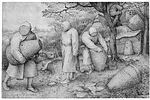Beekeeping, a Honey of a Hobby
Larry Bucciarelli finds bees extremely interesting insects. He should know, he first started keeping bees when he was a kid. He learned the ins and outs from his grandfather who raised bees at his home in Fort Lee. Larry went to college at the University of Hawaii and in exchange for keeping on eye on their 70 hives (it would take a full week to extract the honey from the hives) he got free tuition. “Because it was the tropics, they produced triple the amount of honey that you would get here,” Larry says. “I would extract the honey three or four times a year.”
Larry has hives here in Palisades and at his upstate home. In the spring there can be about 3,000 bees in a hive and in mid summer the bee population in a hive can increase to over 50-60,000 bees depending on the strength of the hive. The queen bee produces as many as 2,000 eggs a day.
It seems the poor female worker bees get a raw deal. Depending on their age, they act as nurses to the young and attendants to the queen, forage for pollen, fan the nectar to make honey, guard the entrance and clean and ventilate the hive. Only one lucky male drone gets to fertilize the queen, which takes place in flight. The rest sit around on their laurels. Guess that’s why there are considerably more females than males.
Bees have personalities; some are gentle while other varieties are vicious. “Killer bees that started in South America have entered the U.S. and are mating with honey bees. Their offspring are producing a lot of honey,” Larry relates. No need to worry about them heading our way though, it’s too cold for them. Cold weather has a lot to do with the amount of honey produced. “Last year because of the extremely cold winter I lost my hives,” Larry recounts. Worker bees cluster around the queen over the winter forming a ball. It needs to be 92 degrees for the queen bee to survive.
Larry normally collects honey once a year in late July. “In a good year I can get up to 150 pounds of honey. It’s a weekend process and I enlist my wife Nancy to help.” He filters the collected honey but doesn’t heat it. “That destroys the amino acid and then you only have flavored sugar.” Leaving the honey that is produced after that in the hive provides nourishment to keep the bees strong through the winter.
Larry wears a netted helmet but doesn’t wear gloves. “I got good advice early on. I was told to work with my bare hands. It creates a more harmonious relationship and you are less likely to accidentally crush a bee.” It’s easy to see why Larry finds beekeeping “endlessly fascinating. “


